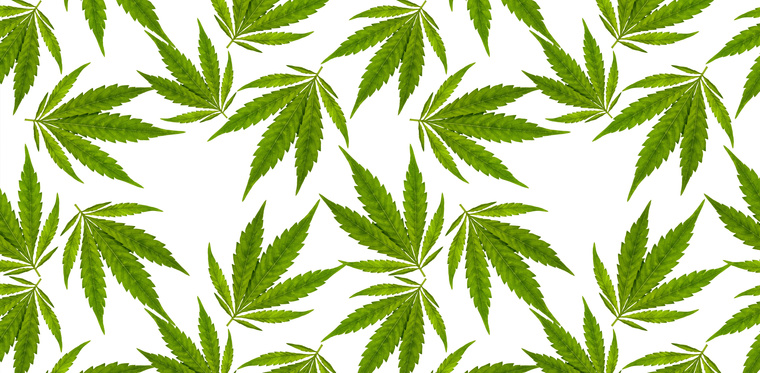
Explore Some Benefits of Medical Marijuana Vs. Recreational Marijuana
Most individuals worldwide believe that cannabis provides a lot of medical benefits. Various studies or researchers have provided evidence on the medical effects of marijuana. Nevertheless, the state regulations and federal prohibition have limited further clinical studies.
Despite these prohibitions, numerous states, approximately 11 states, have continued implementing different MMJ programs. These states permit cannabis for adult use without considering any medical condition qualification. Therefore, it's imperative to apply for marijuana use in most states like California or Oregon.
Even in states that have fully legalized, people are continually applying for this MMJ program. This article highlights reasons for applying for the MMJ program.
1. Potency Limits
Most individuals believe that most medicinal cannabis should have more potent weed than recreational one. The latest research reveals that when dosing for cannabis, you’ll primarily need more THC. Nevertheless, you'll need an MMJ card to get more potent marijuana.
Recreational dispensaries in different states have lower limits on their sale than their MMJ counterparts. It's evident in California, where the state authorities legalized the adult use of marijuana. In most states, recreational sellers couldn't provide more than 1000mg of cannabis in each lotion of tinctures. However, most medical dispensaries have started selling marijuana with more cannabinoids. Authorities have adopted the same rules in California, Nevada, Colorado, and Oregon.
Additionally, when you have an MMJ card, you’ll enjoy accessing different strains of marijuana having higher contents of CBD. The higher CBD contents are essential for enhancing medicinal effects. It’s also the best option for minors as it causes no ‘high.’ Researchers reveal that it contains anti-anxiety, antioxidant, anti-inflammatory, anticarcinogenic, and antipsychotic properties.
2. Legality (Age Limits)
Across most states in the United States, the Marijuana Tax Act, 1937 prevented the use of marijuana and hemp. Nevertheless, some states continued growing it after World War II in 1970. Thus, cannabis, hemp, and their cannabinoids became scheduled items.
Despite replacing the legislation, you have to apply for permission from the government to grow or use marijuana. Many states approved and put the legalization into writing, but later the Farm Bill prevented the legalization of cannabinoids. Thus, it’s vital to understand that not all 50 states have legalized the use of marijuana, despite its potential medical benefits.
Notably, in the states where you can legally use recreational and medical weed, you still need to have the MMJ program. The program states that you need to be more than 21 years to purchase recreational marijuana. Most states usually allow minors to access marijuana productions but under the approval form a legal guardian or parent. Nonetheless, the law prohibits those minors from obtaining the herb for recreational uses.
3. Accessibility and Availability
In most states, especially where possession of weed is illegal, you may face serious fines and jail terms for possessing recreational marijuana. Due to several issues, such as opposition, it may take a long time for the MMJ program to start working. Nevertheless, in 22 states where the program is in force, you can qualify for the medical marijuana card and use it for recreational purposes legally.
In most adult-use states, we’ve growing concern that MMJ dispensaries are rapidly declining in number. Besides the declining number of dispensaries, you can walk into any marijuana dispensary and get these products. However, you can’t purchase it for recreational use.
Cardholders have also got a boon with the rapid rise of dual-license dispensaries or shops. You can get marijuana for both uses at these locations. Apart from making it easy to obtain the products, you can easily get responses to all your marijuana medical questions. With their vetted, trained, and certified staff, they’ll provide the appropriate response to your queries.
Additionally, if you’re an MMJ patient, the program allows you to use a caregiver to purchase, possess, and grow the herb on your behalf. However, growing marijuana will depend on the state. When choosing your caregiver, the authorities advise choosing the right person suitable and responsible for the task. Generally, the medical marijuana card provides total protection from the law.
4. Quality and Cost
The notable difference between recreational and medicinal cannabis is the quality. The different way the growers cultivate or produce it determines whether it's medical or recreational cannabis.
Before becoming ready for consumption, medical marijuana must undergo a thorough process. You have to grow it in a more controlled environment and with great care. It’ll be imperative to consider pests and diseases to make them suitable for patients.
The process of medicinal marijuana growth and preparation slightly differs from recreational use. Despite not wanting to produce unsafe marijuana buds, most companies growing and cultivating recreational marijuana take less care of the plants. These facts show that medicinal cannabis is more pure and clean than recreational one. However, the gap between them has decreased in the past years due to improved extraction techniques and cultivation.
Despite the improvement in the cultivation and production of the herb, we still have a huge gap in the MMJ and recreational marijuana cost. In the medical marijuana dispensaries, you’ll get the products at lower prices compared to those at recreational locations. The price keeps increasing due to the lack of coverage of these products in the different health insurance policies.
Additionally, the tax included on these products can vary the cost. We’ve concessions in the MMJ dispensaries that individuals can’t enjoy in the recreational locations. Therefore, having an MMJ card helps you avoid extra charges like retail and excise marijuana tax that authorities levies on recreational marijuana. Some states’ records were as high as 25% difference in the tax difference between these types of weed.
5. Cultivation
You can grow your marijuana legally at your home if you get the marijuana card. However, not all medical marijuana programs will permit the growing of cannabis, but most of them will allow it. For example, the Alaskan MMJ program allows cardholders to grow up to six marijuana plants. Nonetheless, it allows you to have three plants at flowering and maturing stages simultaneously.
The program recently allowed the MMJ cardholders to cultivate up to 12 marijuana plants in a household in Arizona. You can get more exciting news from the official Sonoma County website, where the programs allow the MMJ patients to grow the plants at home without having any limitations, but on a space of 100 square feet. Lastly, the authorities restrict recreational marijuana users to growing a maximum of six plants.
Additionally, the different adult-use states come with additional restrictions. If you stay more than 25 miles from the dispensaries, only a few states will allow you to grow the herb. Despite the regulations, it’ll be better than when you can’t cultivate the herb if you lack the card.
Final Thoughts on Medical Vs. Recreational Cannabis
Most marijuana enthusiasts are waiting for more states in the United States to legalize the herb due to its numerous benefits. Currently, you have to abide by the regulation of each state. Approximately 11 states plus D.C allow marijuana users to apply for the MMJ Card. This card is very important to enable you to grow weed, access lower-priced, and higher-potency marijuana products legally. They are essential features and qualities of both medicinal and recreational marijuana users.



.png)